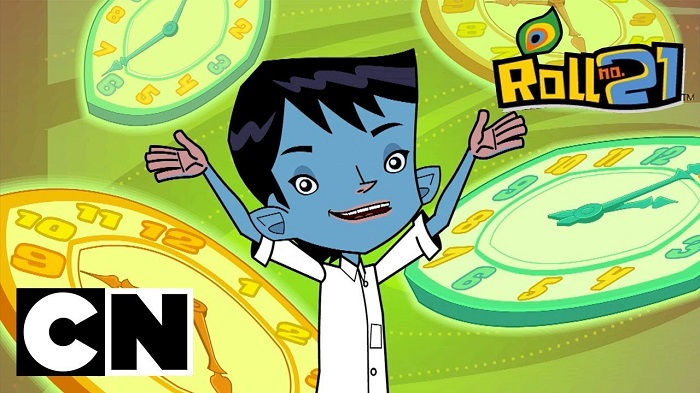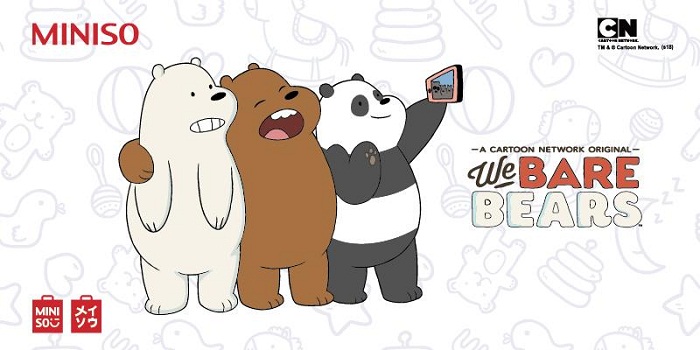Licensing and merchandising (L&M) has always been a crucial part of the growth and flourishing of IPs and brands across the globe. Though it started in India nearly three decades ago with Disney stepping in with a master franchisee, the sector has only grown over the years and the domestic IPs are presently hugely popular in the business.

Cartoon Network Enterprises (CNE), the merchandising and licensing arm, that represents Warner Bros., Cartoon Network and Adult Swim properties, has been expanding in India with a healthy double-digit growth rate over the last few years. In India, CNE has strategic partnerships with various leading brands across categories like fashion, FMCG, stationary, toys and more.
CNE expands by growing categories and potential brand partnerships for a 360-degree fan engagement. It has engaged in strategic partnerships with popular characters like Batman, Scooby Doo, Ben10, Harry Potter, The Souled Store, POPxo Shop, Balenzia and many others. This has given a new dimension to the Indian audience with a sneak peek into the lives of their favourite toons.
In a recent chat with AnimationXpress, CNE South Asia senior director Anand Singh elaborates on Turner’s exclusive L&M directions, milestones, different markets and how classics always work wonders. He handles the L&M business across the South Asia region which includes India, Pakistan, Sri Lanka, Bangladesh and Nepal. Read on:
1. Can you elaborate on your licensing and merchandising policies for Turner in place?
In South Asia, we are fortunate to have a portfolio that is immensely diverse and ranges from Kids animation up to theatrical movies, making our strategies extremely varied. From mega properties like Harry Potter, which have a huge fan following in India to the ever-popular DC franchise.
The portfolio also includes on-screen cartoons and characters, for example Scooby-Doo who features in movies that are loved by fans. We have also seen great demand for old classic Cartoon Network properties such as Johnny Bravo, Dexter’s Laboratory and others as well, which makes our strategy dynamic and wide-ranging, spanning age groups and demographics.
2. How has it been for the animated IPs?
Besides Kids, which is one of our key areas, we created a trend that changed the merchandising landscape. We tapped into the relatively unexplored young adult demo, those in their 20s and who love Cartoon Network classic 90s animated shows. We realised that while this audience has evolved, their love for these animated IPs has only grown ever since.
Focusing on this nostalgia, we launched several products around popular IPs like Johnny Bravo, The Powerpuff Girls and Dexter’s Laboratory, with our licensee, The Souled Store. The response was tremendously positive. Besides that, classic portfolios like Looney Tunes, Tom and Jerry also give a lot of scope to do things in the young-adult space. We also see a big opportunity for Warner Bros. Consumer Products’ portfolio in India.

3. How’s the business in India different than that from SAARC regions?
The South Asia region is evolving at a fast pace and offers immense opportunities, but is still some way behind other markets in terms of business evolution and ticket size. If you look at markets like Singapore, Hong Kong they’re much more evolved than the others, but still to reach the position of USA or Europe. USA and Europe are at the top, in terms of evolution of the business, ticket size, product portfolio and spread. t’s a surprise that the business of some IPs are same in India and Singapore. Imagine the size of Singapore compared to our country!
In Pakistan, we have a dedicated Cartoon Network channel and we have done very well in Bangladesh too, with partners like Bata and Bengal Polymers. The Sri Lanka market is growing as well. We have just started exploring the Nepal market. So, those markets are small, evolving, but I see a lot of scope. There are a lot of white spaces which can be worked upon.
4. Anything in works with the Indian IPs, now that it has been quite some time since Roll No. 21? How has the business been for Roll No. 21?
Roll No. 21 has been popular in India since its launch in 2010. We have had great success in terms of clip licensing and promotions with Colgate and multiple other brand deals on the promotional side.
We are working on a few new Indian IPs and will be coming up with interesting promotions and campaigns in the coming months.

5. How does the consumption pattern differs in India in case of merchandising?
Honestly, in India piracy is still a huge challenge. Licensees are very aggressive in terms of price policies, which means launching a premium product can be difficult. Also, the Indian market is very cluttered but, again, it’s evolving.
E-commerce has quickly become the easiest and fastest route to get products into market. But it’s difficult to address niche categories this way. E-commerce companies still struggle to reach more than 70 per cent of the population so there’s still so much more that can be explored in the retail space for kids and young adults.
6. How has the collaboration with noted names like The Souled Store benefitted you?
It is great to work with online platforms such as The Souled Store as they employ innovative marketing techniques and have a hunger for growth. They always want to do things that are marketing- and digital- focused, and are willing to put 100 per cent effort into them.
Besides licensing, we have a lot of 360 collaborations with them. To give you an example, ‘The POW-fect Girls List’ was a campaign we did last year to celebrate 20 years of the iconic Cartoon Network franchise, The Powerpuff Girls. The traction we received for that, in partnership with The Souled Store, was amazing.
We’re are always on the lookout to innovate and collaborate with partners for other IPs as well. With an audience that has evolved with us and who today thrive on immersion, we have moved towards greater experiential brand-building enabling our fans to embrace our brands, franchises and characters in very part of their everyday life beyond the TV screen.

7. Have you achieved any milestone for the L&M policies?
‘The Powerpuff Girls’ was a great campaign for us. We’re so happy with it that we’re thinking of doing a Powerpuff Girl campaign every year, like an annual event. We Bare Bears is a very recognisable IP in the rest of Asia because of its universal appeal. The bears are all over social media. Fans love that they are cool, contemporary and fun. In India, we have a deal with Miniso for this IP, which has been doing extremely well and will soon reach 100 stores. We have a couple of other ongoing deals and are actively taking strategies to market We Bare Bears for the young adult demo.
8. How has the licensing policies helped the IPs to flourish further as a brand as people associate and relate with the merchandise?
It’s about touch points. Earlier it was TV and now it’s digital. For any client or consumer, all the touch points they are interacting with any IP becomes crucial for the company. Be it on digital or an attractive merchandise in a mall, everything comes into place. This has a positive impact on the channel, the IP and the brand. More you see, more is the familiarity with the character, even if not the series.

9. What are your current or future plans to take this ahead in India?
If you look at the properties CNE has, we will sustain and grow our core Kids business. At the same time, we are pivoting our business towards young adults. It’s under-served and has a lot of potential. The propensity to pay for merchandise by young adults is much higher than kids.
Harry Potter, Batman, Superman and We Bare Bears are enduring franchises and have huge appeal in this demographic. For example, in 2019, Batman celebrates his 80th birthday and Scooby-Doo is 50. This is a huge opportunity for our IPs and to bring them closer to their fans.
10. Do you think movies have helped to garner a lot more eyeballs to merchandising of these characters – from comics to films to merchandise?
Absolutely. Naturally, from the licensing perspective the opportunity is smaller when you have a classic IP. What movies have done is that they’ve propped up the IPs and kept them relevant. Even though there’s a peak generally before and after a movie release, they help to drive longevity for the popularity of the IP.

